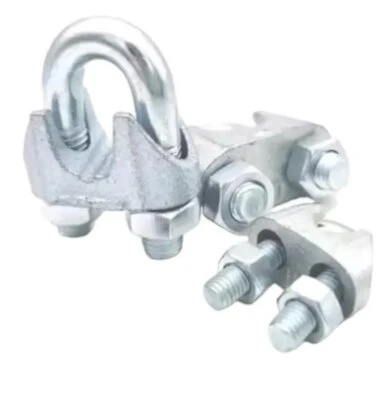Dic . 16, 2024 20:07 Back to list
Different Types of Clamps and Their Uses in Various Applications
Types of Clamp Tools A Comprehensive Overview
Clamps are essential tools in various industries and are particularly vital in woodworking, metalworking, and construction. They are designed to hold objects firmly in place, which allows users to perform tasks such as gluing, drilling, or machining with precision. With a myriad of clamps available, understanding the different types can help you choose the right one for your project. This article explores some of the most popular clamp types and their specific applications.
1. C-Clamps
C-clamps, also known as G-clamps, are among the most common types of clamps. They feature a C-shaped frame that allows for a strong grip on materials. Typically made from cast iron or steel, C-clamps come in various sizes, making them versatile tools for both light and heavy-duty tasks. They are primarily used in woodworking to hold pieces together while glue dries, but they also have applications in metalworking and welding.
2. Bar Clamps
Bar clamps consist of two jaws connected by a long bar, allowing for a significant distance between the jaws. This design makes them ideal for clamping larger workpieces. Bar clamps are adjustable, which means they can accommodate various thicknesses, providing a strong hold without marring the surface of the material. They are particularly useful in furniture assembly and large construction projects.
3. Pipe Clamps
Pipe clamps work on a similar principle to bar clamps but utilize a pipe as the bar, giving them added strength and flexibility. Users can cut pipes to different lengths to match the size of their projects. These clamps are often used in large-scale woodworking projects, where the added length is necessary to secure large pieces together effectively. Adjustable and strong, pipe clamps can handle significant pressures without slipping.
4
. Spring ClampsSpring clamps are lightweight, easy to use, and perfect for quick or temporary holds. They feature a spring mechanism that allows for rapid opening and closing. These clamps are ideal for holding lightweight materials, such as fabric or thin wood, and are often used in hobbies, such as crafting and model building. However, due to their limited gripping strength, they are not suitable for heavy-duty applications.
types of clamp tools

5. Band Clamps
Band clamps are designed for holding irregularly shaped objects or multiple pieces together. The band, usually made from nylon or steel, wraps around the workpieces and can be tightened with a ratchet mechanism. These clamps are particularly useful for gluing up joints or when working with frames, as they apply even pressure all around the object. They are essential in cabinet making and similar projects.
6. Corner Clamps
Corner clamps are specialized tools designed to hold workpieces at a 90-degree angle. They are particularly useful in joinery, framing, and furniture assembly. By securing two pieces together at a right angle, corner clamps help ensure accurate assembly and alignment, making them a favorite among woodworkers and carpenters.
7. Edge Clamps
Edge clamps are designed specifically for clamping materials at their edges. They are particularly useful in applications where surface damage must be avoided, as they minimize the clamping area’s contact with the material. These clamps are essential in cabinetmaking and when working with veneer, where a tight joint is necessary without damaging the visible surfaces.
8. Toggle Clamps
Toggle clamps incorporate a lever mechanism that allows for quick and easy clamping. They are often used in manufacturing and assembly lines due to their ability to provide consistent pressure. Toggle clamps are available in both horizontal and vertical designs, making them adaptable for a variety of applications, including jig setups and fixturing.
Conclusion
Understanding the various types of clamps is essential for anyone involved in construction or woodworking. Each type of clamp serves a specific purpose, from the versatility of C-clamps to the specialized features of corner clamps and toggle clamps. By selecting the appropriate clamp for your project, you can ensure that your materials are held securely and accurately, allowing for a successful outcome every time. Whether you're a professional tradesperson or a DIY enthusiast, the right clamp can make all the difference in achieving high-quality work.


